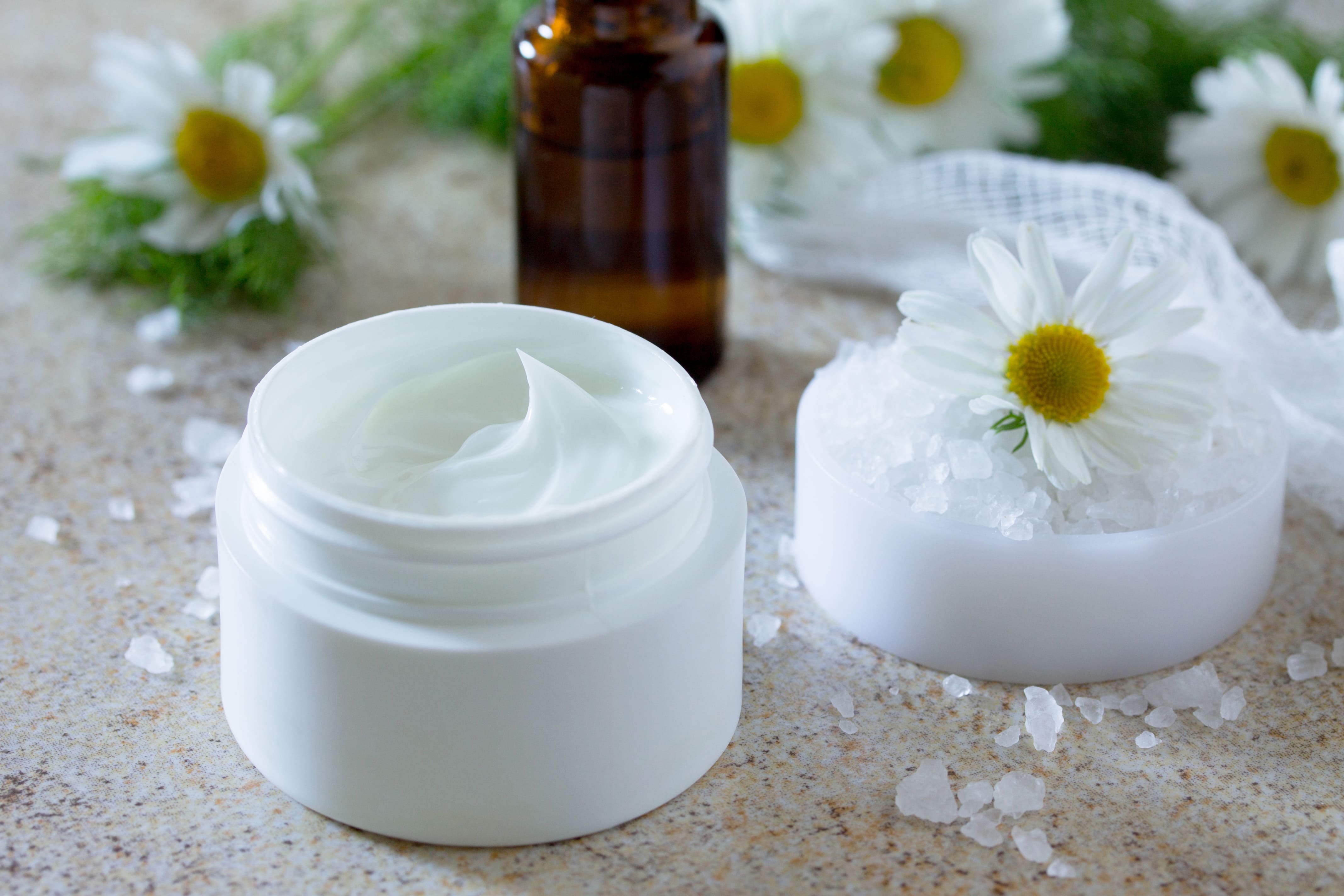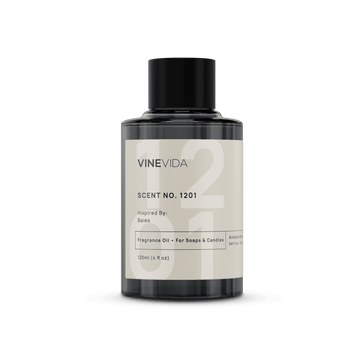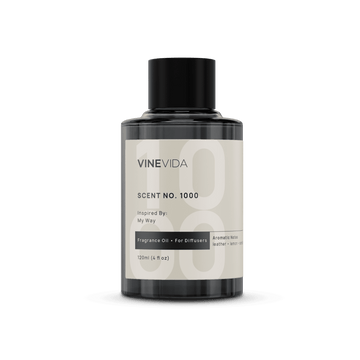To learn how to make night cream with essential oils, we must first ask, "Why should we make it"? Night creams boost and retain hydration. They encourage collagen production, fight free radicals, and improve skin elasticity. They are the most medicinal product in our regimen, achieving a brighter, more even complexion. They are simple to make by melting emulsifier wax (or beeswax), adding a small amount of Glycerin, and blending it with carrier and essential oils.
- Join me and learn what night cream does and explore the benefits of this wonderfully nourishing skin care product.
- Learn what you need to make it in the comfort of your home.
- Discover how to change the ingredients and formula to suit you.
- Jump into the beautifully decadent recipe we provide for your night cream.
- Find out how to apply it and where in your skincare regimen you should use it.
- We reveal how to use it and make it last with proper storage to negate the need for preservatives.
What does Night Cream Do?
A good, well-balanced, and curated night cream should do several things:
-
- It can help combat the drier skin we sometimes experience as we move from season to season. Significantly from summer to fall and from fall to winter. Perfect then for this time of year to introduce it into your skincare regimen.
- It helps your moisturizer absorb better. Deeper absorption means plumper, firmer, and smoother skin. As we all know, better hydration means fewer lines and wrinkles.
- Higher concentrations of selected ingredients improve hydration, skin circulation, cell turnover, and regeneration.
- An added humectant (a substance that attracts water from the air or is more profound in the skin)- in this case, Glycerin - promotes that extra boost of hydration.
- A night cream focuses more on the reconstruction process of the skin, encouraging collagen production.
- Improve skin tone and elasticity, and aid in a brighter, more even, radiant complexion. Also Read: How to Make Perfume with Essential Oils
Why Make Homemade Night Cream?
I make my night cream because I find it the product where I can lavish myself with something decadent and genuinely luxurious, especially when it will have such a powerful and profound effect on my skin.
It is worn on top of your moisturizer, so you need minimal amounts. This means you can afford to push the boat out a little here, both in terms of the quality of the ingredients and the essential oils you use. If you store it carefully, a small jar of night cream will last a while; when you make your skincare, you can also control what goes into the formula and what you want to put onto your skin. Have a say in how the ingredients you choose have been produced, their sustainability, and their global and climate impact. The provenance and purity of the ingredients are in your hands. This is more significant than ever in a world where some skincare ingredients sound like terrifying chemicals.
Also Read: How to Make Bath Bombs at Home
How to Make Night Cream with Essential Oils at Home
Learning how to make night cream at home with essential oils is relatively simple. The trickiest bit is to get to grips with something called Emulsifying Wax; this product enables us to mix oil and water and then bind them to stay that way and not separate.
We also will not be adding any preservatives here; I generally prefer not to, liking to keep my formula as pure as possible. However, Liz recommends that "Keeping your pots small will help" and that "Essential oils will act as preservatives, especially if you have antifungal oils like Tea Tree in the blend." (Ashley,2015). You can find further hints, tips, and recipes in her book 50 Easy Essential Oil Recipes for Skin Care Products for Dry Skin - Make Your Own Anti-Aging Moisturizers, Night Creams, Toners, and Masques.
It is essential to know that you can add preservatives if you wish, following the manufacturer's instructions carefully, as they will sometimes differ. Do your research to find which suits you and your skin type best and when you should add it into the mix.
Without further ado…let us get stuck into the process.
Equipment you will need:
- Double Boiler
- Kettle
- Food processor (for skin care only, not for food use)
- Measuring Jug
- Spatula
- Glass jar(s) with tight-fitting lids.
Ingredients you will need to make one liter (a little more than 1 US Quart), which will give you 20x 50ml (2fl oz) pots.
- 550ml (19 fl oz) Water
- 330ml (12fl oz) Carrier Oil
- 20 ml (1.5 tbsp) Glycerin
- 70g (2 ½ oz) Emulsifying Wax such as Cetearyl Alcohol or Polysorbate 60
- 30ml (1 fl oz) Essential Oils (approximately 600 drops)
The ratio of this formula is as follows: you may reduce or increase the scale of the recipe to suit yourself.
| Water Base | Carrier Oils | Glycerin | Emulsifying Wax | Essential Oils |
|---|---|---|---|---|
| 55% | 33% | 2% | 7% | 3% |
| To make 100ml (3.38 fl oz), for instance: | ||||
| 55ml | 33ml | 2ml | 7ml | 3ml |
Method - How to Make Night Cream with Essential Oils
- Place your emulsifying wax in a double boiler over low to medium heat. You do not want a high heat here.
- While waiting, boil your kettle and measure the boiling water when your wax is melted. If you wish to use hydrosol in the mixture, warm the hydrosol in a saucepan on the stove. The water and the hydrosol must be at the boiling point when poured in.
- Carefully pour the melted emulsifying wax, boiling water, glycerin, and carrier oils into the food processor.
- Do not be tempted to switch it on and whizz; use the pulse option gently. The reason is that you do not want to introduce too much air into the product because when you put it into the jars, as it cools and solidifies, it will shrink and sink in the pot. You do not want this to happen. Just trust me, pulse, and use your judgment when thoroughly combined and mixed.
- At the last moment, add your essential oils and give them another pulse to ensure they are evenly distributed.
- Pour the mixture into a measuring jug using a spatula to help remove the glorious product.
- Carefully fill each jar and clean the rims and outers from spills or drips.
- You must leave these to cool thoroughly, so cover them with a clean cloth and let them cool completely before you screw the lids on. If you do not do this, the chances of your beautiful product going moldy are very high. No one wants that!
- Label and date the jars and store them in a dark, calm, and ambient place. To prolong the storage life, keep them in the fridge, so they must be very clearly labeled.
How to Make Night Cream with Essential Oils - My All-Time Favorite Recipe
Ingredients you will need to make one liter (a little more than 1 US Quart), which will give you 20x 50ml (2fl oz) pots.
- 550ml (19 fl oz) Water mix - Made up of 300ml (10.5 fl oz) Spring Water and 250ml (8.79 fl oz) Rose Hydrosol (Rosewater).
- 330ml (12fl oz) Carrier Oils - Made up of 30ml (1 fl oz) of Sea Buckthorn Oil, 100ml (3.5 fl oz) of Argan, Jojoba, and Grapeseed. If you cannot get Sea Buckthorn, round up the three other oils to 110ml each.
- 20 ml (1.5 tbsp) Glycerin.
- 70g (2 ½ oz) Emulsifying Wax such as Cetearyl alcohol or Polysorbate 60.
- 30ml (1 fl oz) Essential Oils (approximately 600 drops - 100 drops are approx 5ml - but this also depends on the viscosity of oil, so bear that in mind). Use the blend in the table below.
| SL No: | Essential Oils and Absolutes | Safety Data Level For A Healthy Adult |
Drops |
|---|---|---|---|
| 1 | Rose Maroc Absolute Oil (Rosa Centifolia) | 3% | 140 |
| 2 | Jasmine Absolute Oil (Jasmine Grandiflorum) | 0.7% | 80 |
| 3 | Carrot Seed Oil (Daucus Carota) | 3% | 50 |
| 4 | Rose Geranium Oil (Pelargonium Asperum var. roseum) | 3% | 130 |
| 5 | Patchouli Oil (Pogostemon Cablin) | 3% | 40 |
| 6 | Vetiver Oil (Vetiveria Zizanoides) | 3% | 40 |
| 7 | Ylang-Ylang Oil (Cananga Odorata) | 0.8% | 120 |
Want Something More Cost-Effective?
Swap out the:
- Rose Maroc - Rosa Centifolia for Lavender (Bulgarian) - Lavandula angustifolia
- Jasmine - Jasmine Grandiflorum - for Petitgrain - Citrus aurantium L
- Vetiver - Vetiveria zizanoides - for Palo Santo - Bursera graveolens
It will have a distinctly different scent profile from the main recipe, but it will still provide excellent results for your skin.
Also Read: How to Make an After Sun Lotion
Tip for How to Thicken the Cream
If your night cream is too runny, do not panic. You can thicken it a little further with extra emulsifying wax. Now, you would not want to empty your final product back into the pan and heat it all again; this could be detrimental to your essential oils, as it would be too hot and, perhaps, cause some evaporation.
Therefore, tip the contents of your jar(s) into a mixing bowl. Then heat some more emulsifying wax and let it cool in the pan for a short time. This is where you need to gauge the timing of it being cool enough yet still liquid sufficient to combine the two.
Carefully pour the emulsifying wax slowly into the product in the mixing bowl; you may find it will start to thicken, and you may not need all of the wax in the pan. Remember, as it sets, it will become thicker, too. Do not lose sight of that and end up with a solid block of wax from adding too much.
Stir well to get the two to combine entirely and re-jar into clean jars.
Also Read: How to Make Face Serum with Essential Oils
How to Apply Night Cream
I always look forward to applying my night cream; my skin is usually refreshed and hydrated from my moisturizer. Now it is time for what always feels to me like a layer of absolute decadence and for something ultimately luxurious. This is where I do use my best and most precious oils.
Use on cleansed, toned skin; you may add a very light moisturizer or water-based serum first and then your night cream.
Please do not use an oil-based serum and night cream together; it is too heavy for your skin.
Because Night Creams are thicker, richer creams, you need very little, so use them sparingly. Instead, take a small amount and warm it slightly in the palm of your hand to get the wax to heat and slacken slightly.
Apply in light upward motions across your face, neck, and décolletage. Be gentle around the delicate eye area and use very lightly in this area.
Also, be aware of any drier patches that may need a little more, or if you have very oily skin, you might want to avoid using it directly on your T zone.
Listen to your skin, look at it, feel it.
It will tell you what it needs.
Also Read: How to Make Facial Toner with Essential Oils
Important Questions
Can You Use Night Cream During the Day?
Generally, I would avoid using Night Cream throughout the day because they are vibrant and has its best restorative effects during the night when we sleep.
Night creams have a higher oil content and do not always make the best base for your day-wear makeup.
They also do not contain SPF, leaving your skin vulnerable to UV rays during the day.
The only time I might wear a night cream during the day is if the weather was very inclement, and I was expected to be outside in it for a good while. Then, I would wear it over SPF; the waxy barrier would help alleviate windburn and protect the skin from the elements.
I would not do this regularly or daily; I would use a Skin Protection Balm with an SPF instead.
Is There Any Substitute for the EO?
You could use fragrance instead of essential oils, but consider this carefully. They are chemical-based and do not have the same beautiful effects essential oils have on our overall well-being. In addition, they will have no benefit for your skin other than giving it fragrance. Essential oils are both fragrant and powerful skin healers and mood activators.
You could use a carrier oil with a strong scent, like Sea Buckthorn. I use this widely in my skincare routine for its restorative properties, high levels of Omega oils, and because it boosts collagen.
You could substitute the water in the recipe for a hydrosol or hydrolat, such as rosewater. I have used this to remarkable effect for someone with susceptible skin, making it a fantastic, lightly scented alternative.
How Long Does This Last, as There is No Preservative?
This recipe can last for at least 3-6 months if stored in a relaxed, dark, and ambient environment.
If you are keeping it in a hot, steamy bathroom, it is likely to last little more than a few weeks.
You can extend it further by keeping it in the fridge for a few months. Please make sure it is clearly labeled if you intend to do this.
It sounds obvious, but always use a clean spoon or spatula to remove the night cream from the jar; it stops the cream from being contaminated by our hands and eliminates us from introducing bacteria or mold spores into the cream.
Final Thought
I might finish where I started with the idea that this is one product in your skincare regimen where you should consider going at least a little bit wild and succumbing to divine decadence and luxuriousness.
It is worth buying that bottle of Rose absolute; you can stretch it so far through your skincare. The benefit to your skin is unequaled regarding skin food, nourishment, and healing.
It is worth buying a hydrolat bottle instead of just water to give that extra layer, not only of fragrance but the healing potential from the minute particles of oil and properties found in the hydrolat itself.
The benefit of using the best of what you can afford will soon become visible when you look in the mirror. Your skin will feel hydrated and plumper, reducing those fine lines and wrinkles. As a result, you can expect a clearer, brighter complexion and a more even skin tone and appearance.
I am all for economizing where I can and making the most of what I have and seeking the last bit of life out of everything I can, yet this is where I do not compromise.
When I look at how to make night cream with essential oils, I go for the best of what I can afford because I know I will get the most out of it, and my skin will thank me for it.
In no time, I will see the difference looking back at me in the mirror.
Then I shall know it was truly worth it.














